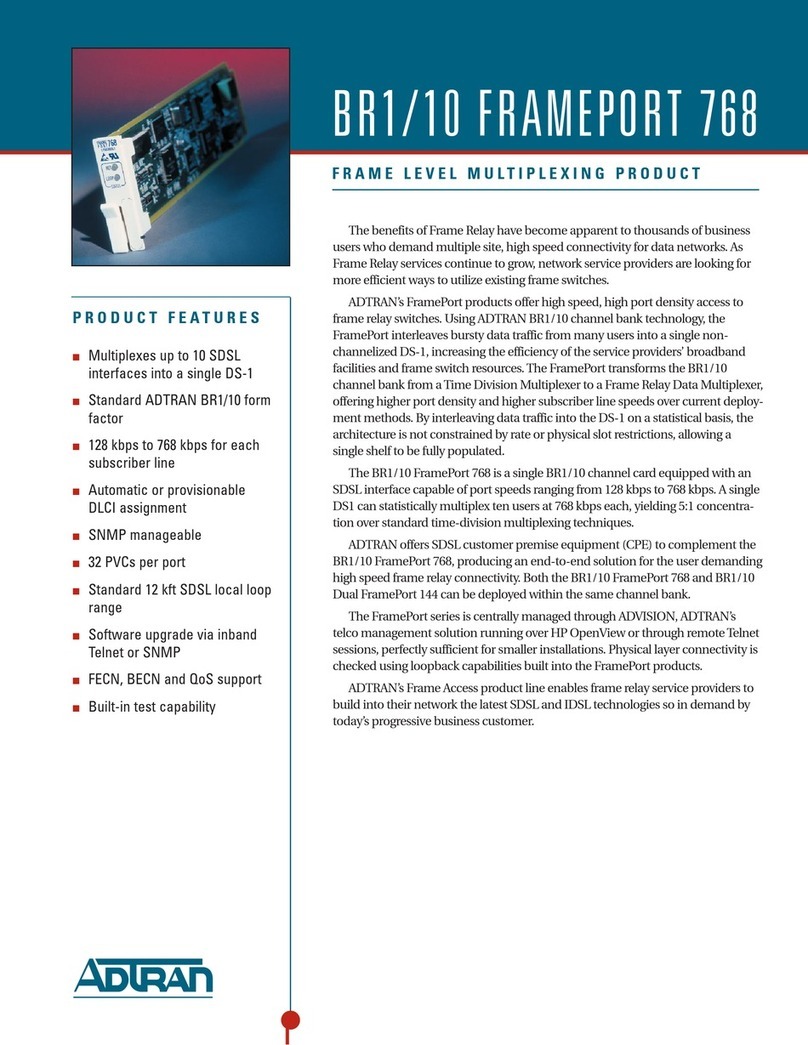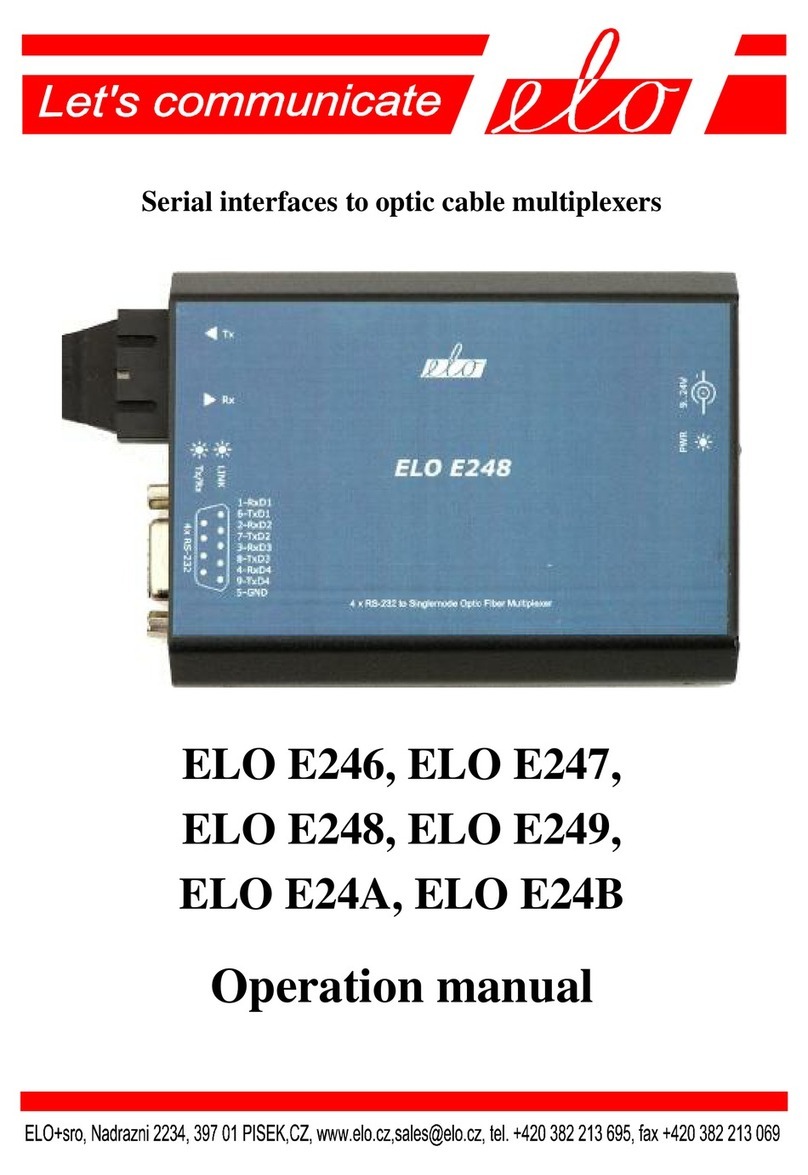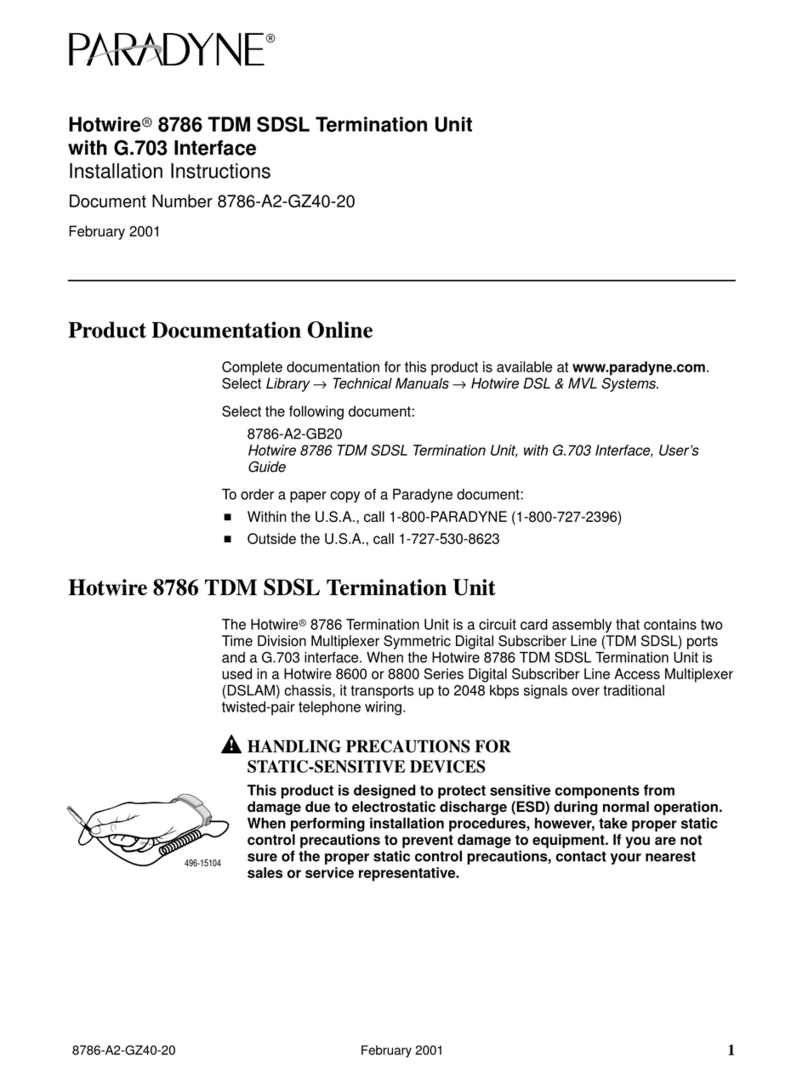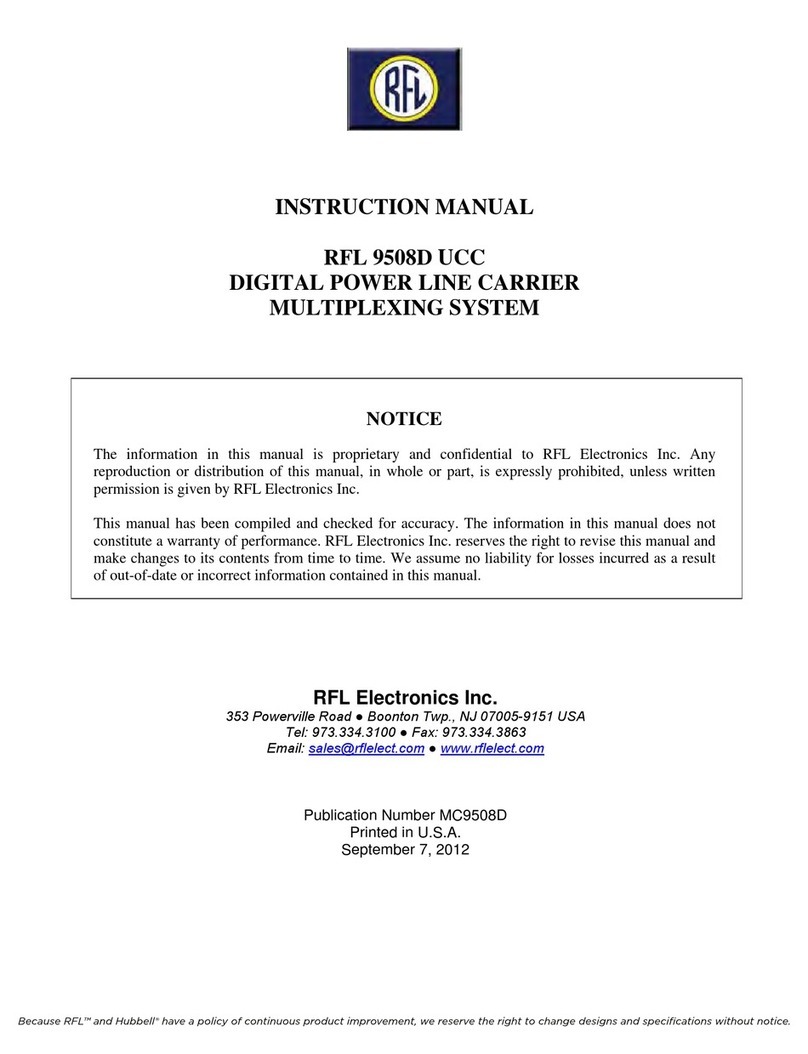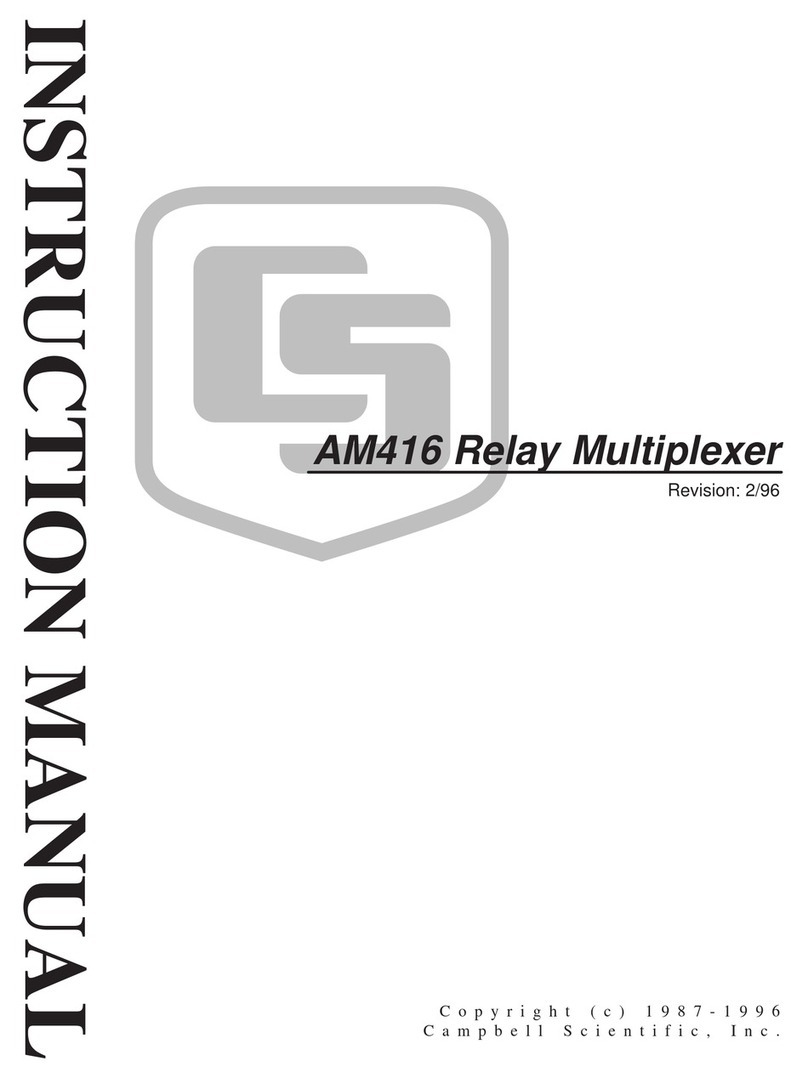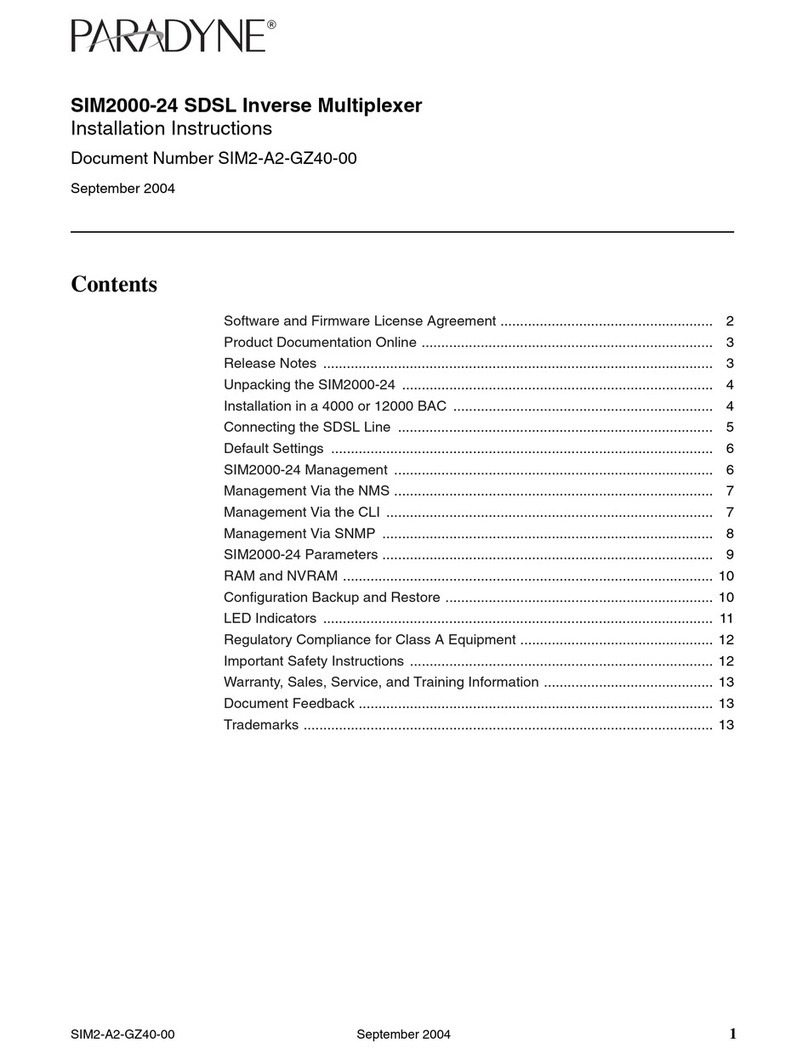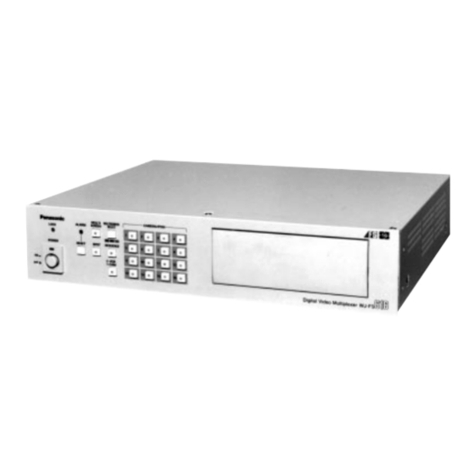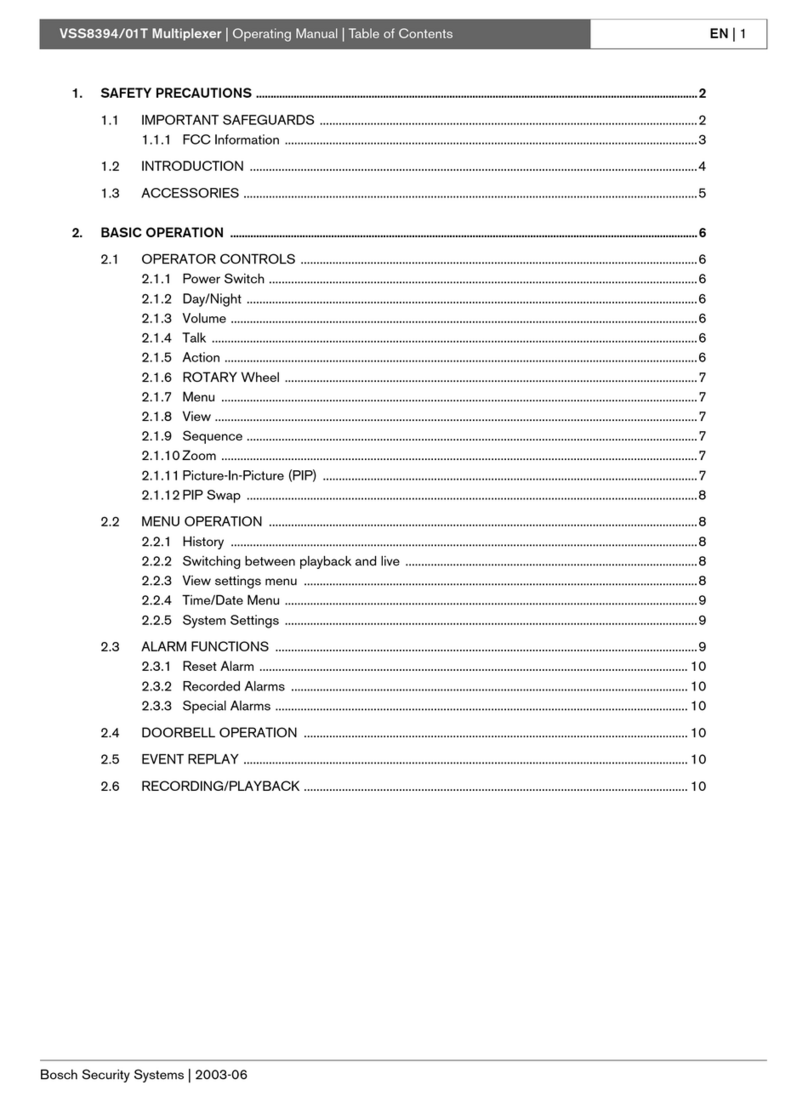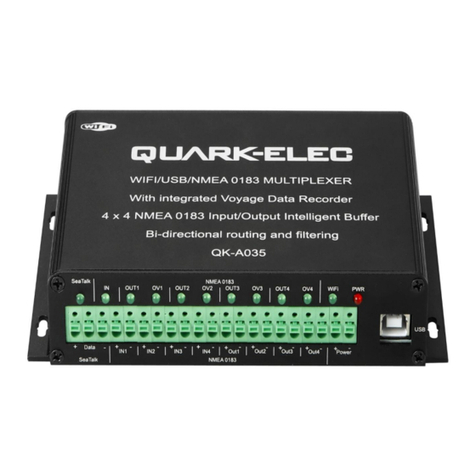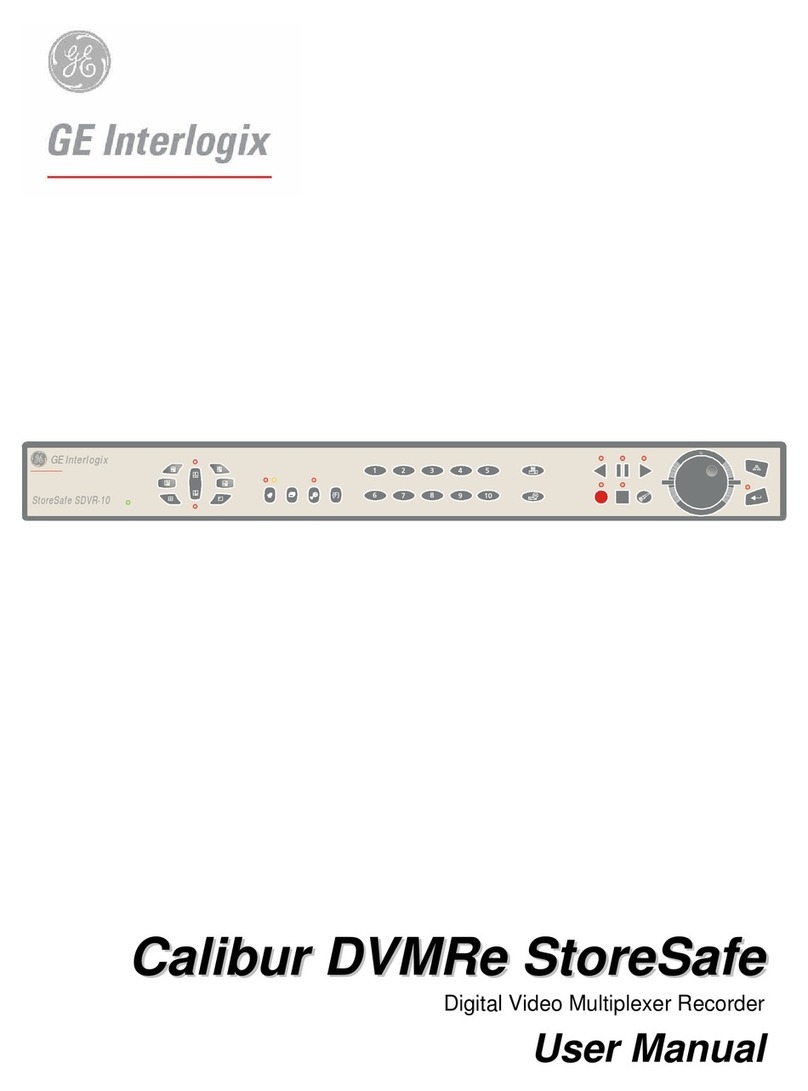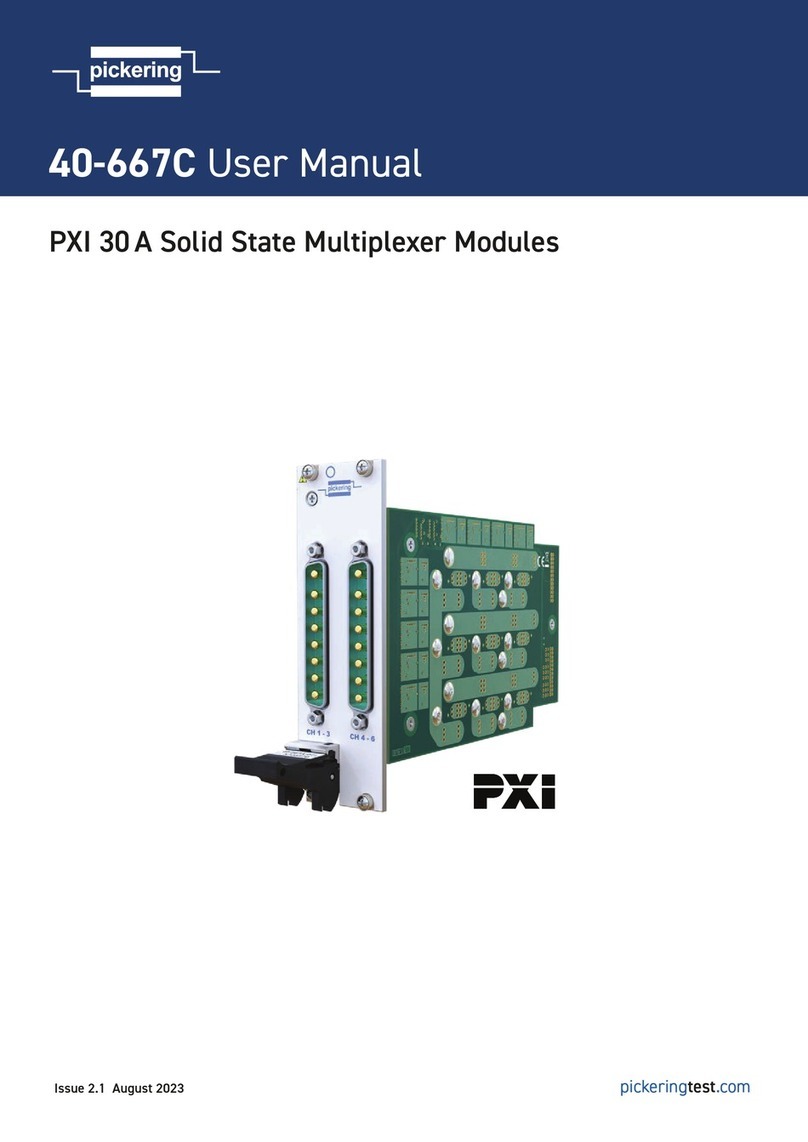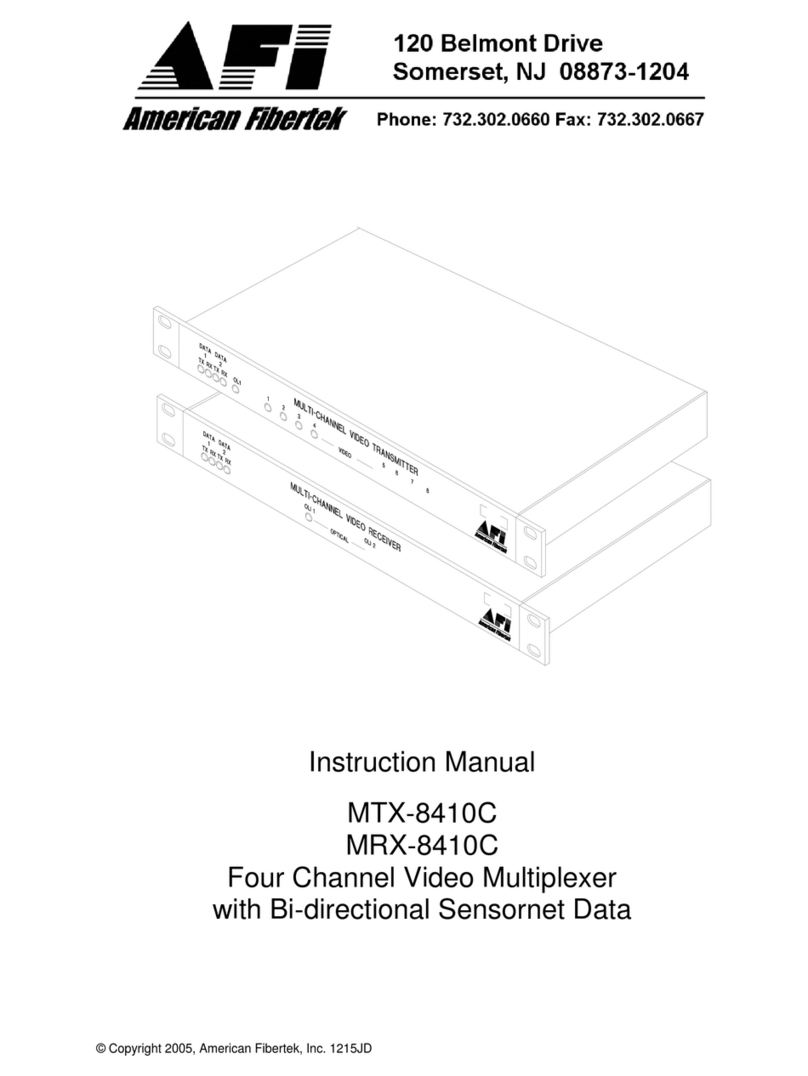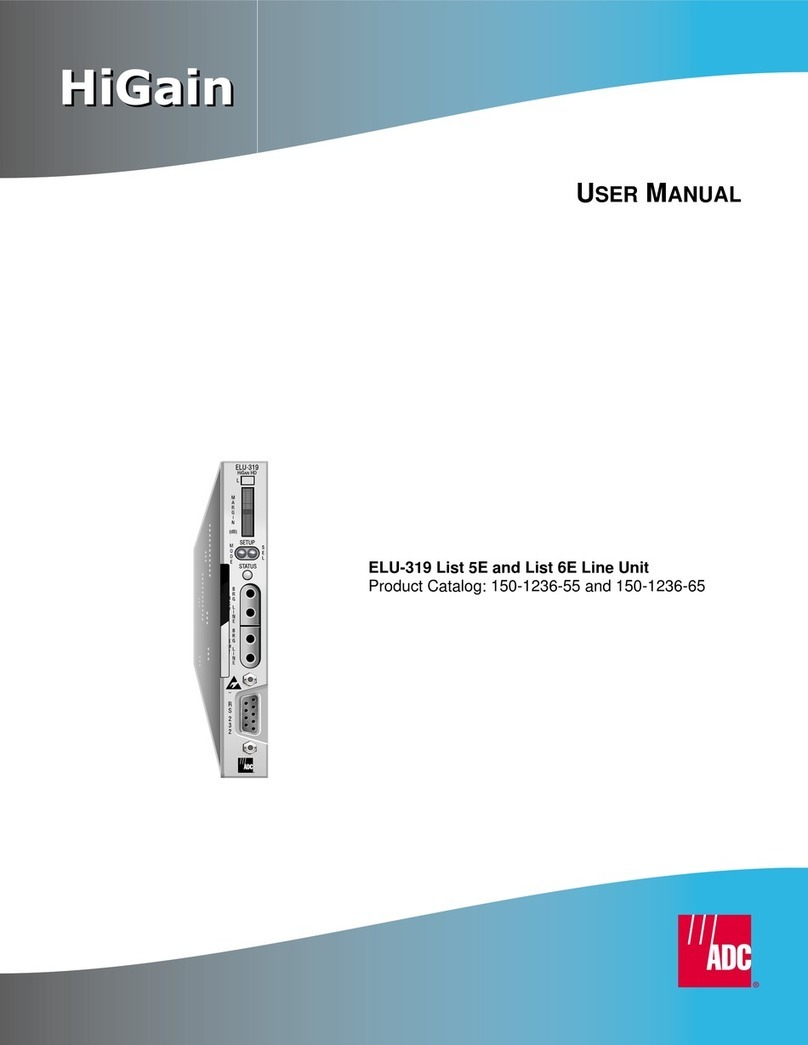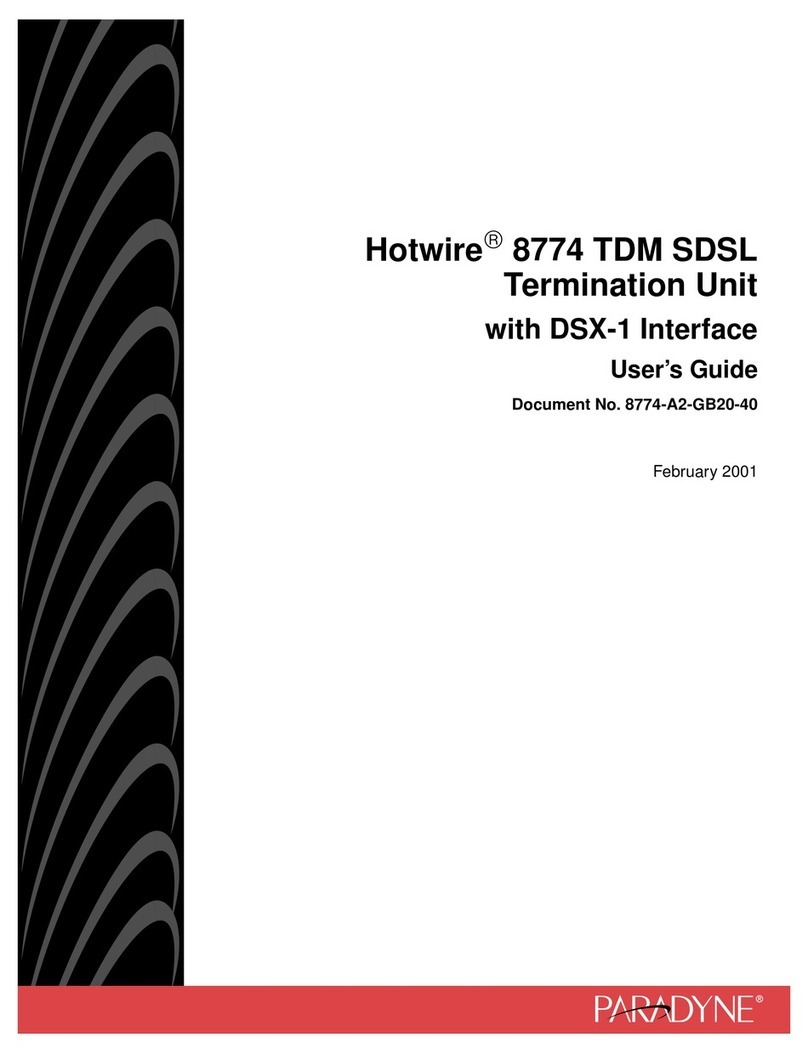
RANGER
Data and Audio Channel Multiplexer with E1/T1 Access
7
3.3 Control module
3.3.1 Front panel
The following elements can be distinguished from top to bottom:
•Two RX/TX communications LEDs that indicate when the
remote control PC is in communication with the control board to
carry out remote control, monitoring or software updating
processes.
•A DIP switch block containing eight microswitches: this is
used to convert the RANGER rack identification into binary code
(see the coding table at the end of this chapter).
•A numeric “ADDRESS” indicator with three seven-segment
displays which indicate the identification programmed by means
of the DIP switches, that is, the address of the node that a control
module occupies in the multipoint control network.
•A group of four operational mode LEDs that indicate the
following:
-MASTER.When this LED is lighted, it means that the rack is
programmed as a master device; when it is off, the rack is
programmed as a slave. (In master mode, the equipment
generates the synchronization clock.)
-E1.When this LED is lighted, it means that you have
selected the E1 type access.
-T1.When this LED is lighted, it means that you have
selected the T1 type access.
-TEST LOOP.This operational mode can only be used when
the equipment is in MASTER mode; it sets up an internal E1/T1
frame loop and, simultaneously, an external loop involving the E1
or T1 balanced communication lines, with the aim of creating
remote external loops.
•A “MODE” DIP switch block containing four microswitches
with the following functions:
-Nr. 1:When this microswitch is in the “ON” position, the
RANGER will operate with an E1 (2,048 Mbps) access. When the
switch is in the “OFF” position, the multiplexer will operate with a
T1 (1,544 Mbps) type access.
-Nr. 2:With this second microswitch in the “ON” position, the
equipment will act as the “MASTER” device and thus will
generate the synchronization clock; when it is “OFF” the
multiplexer will operate as a slave, thus receiving the
synchronization clock sent to it by the MASTER. (There must
always be one equipment item operating as the master and the
other as its slave).
-Nr. 3: When this microswitch is “ON,” the equipment will go
into the “TEST LOOP” mode. When the switch is “OFF,” the
multiplexer will not execute this function.
-Nr. 4: With this microswitch “ON,” the E1/T1 access input is
selected by the optical fiber TX/RX connectors (an option that will
be available in the future). When it is “OFF,” the E1/T1 access
input is selected by the twisted pair connector (an RJ-45
connector)..
